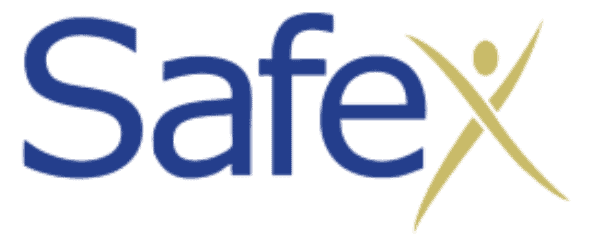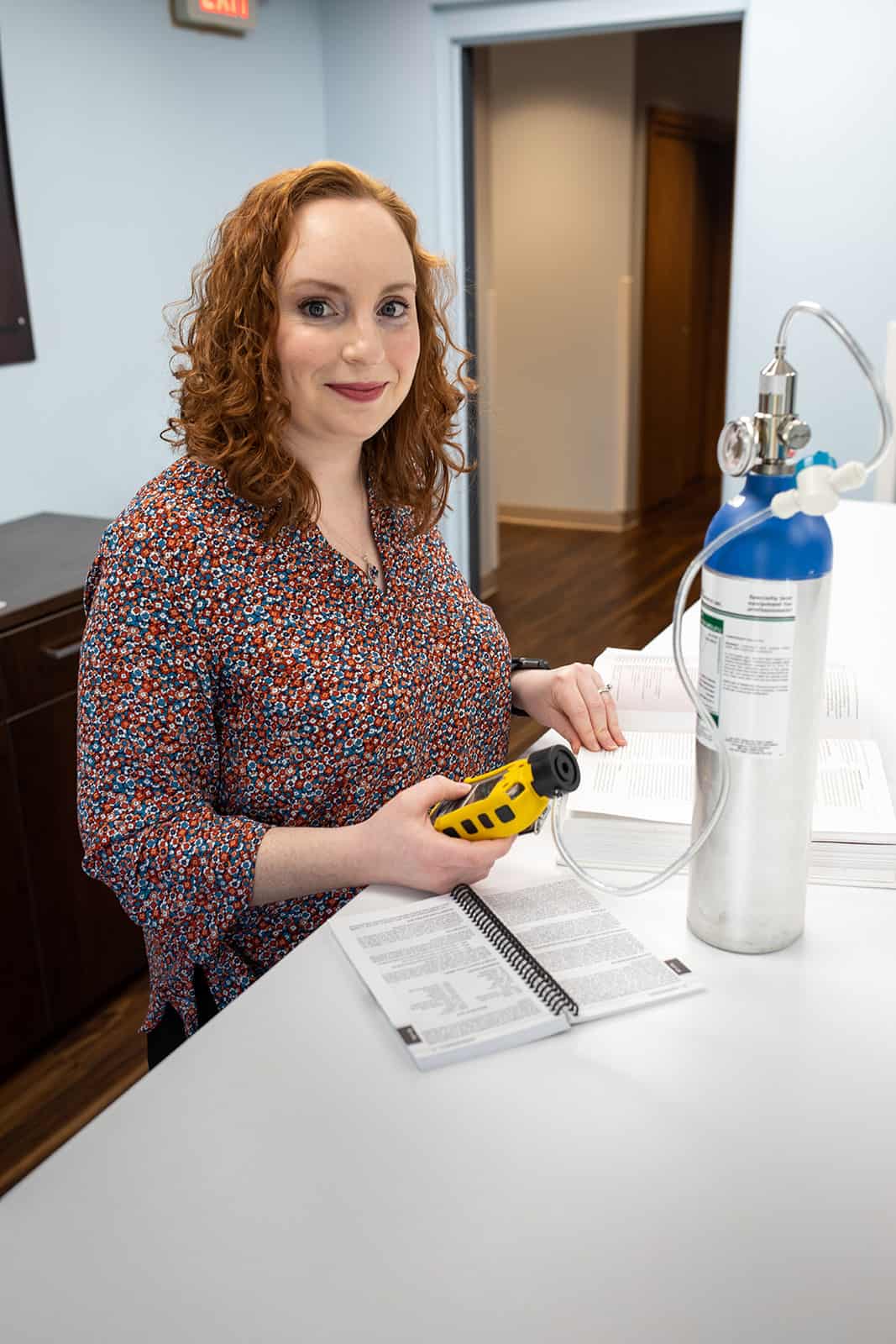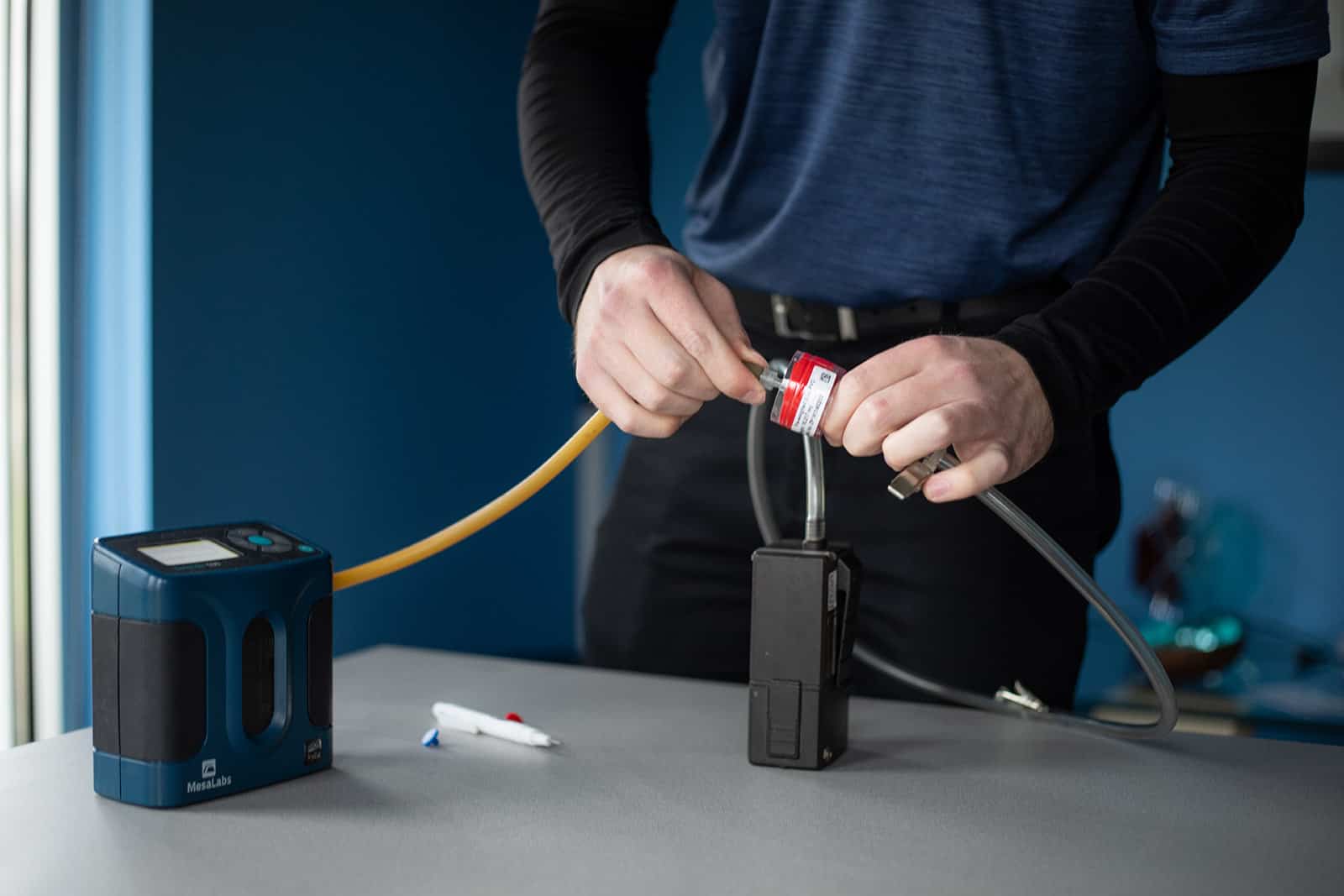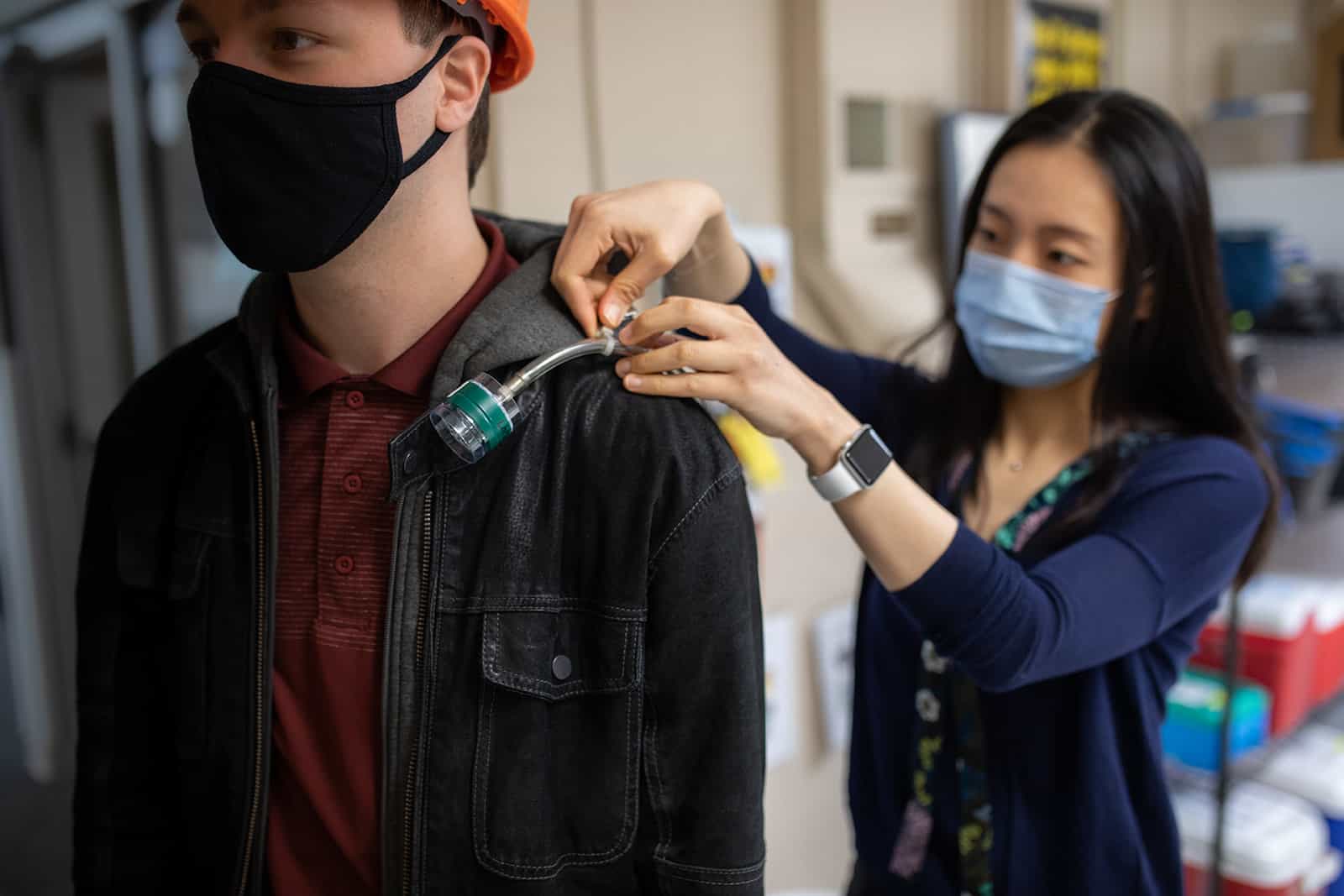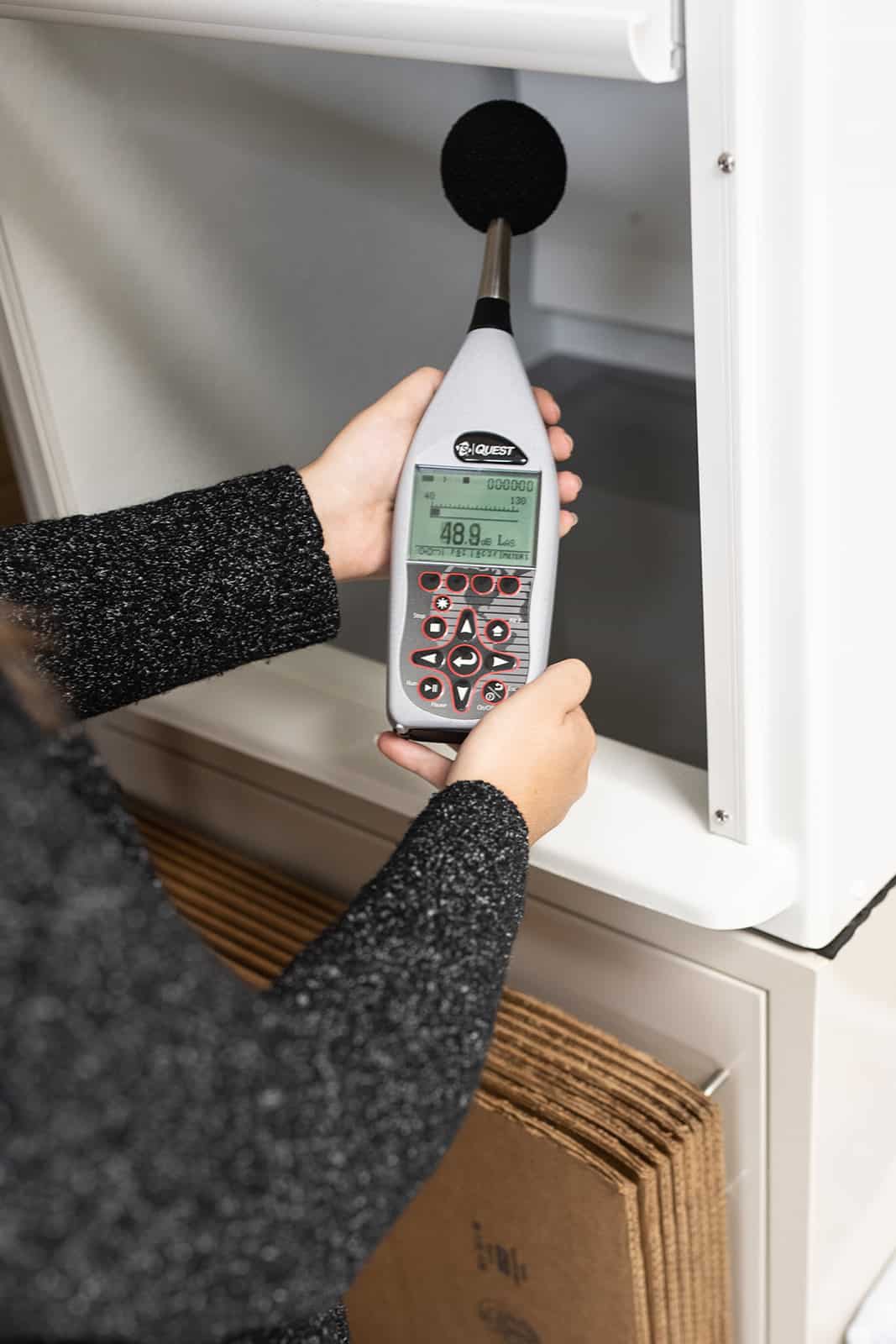Industrial Hygiene Services &
Our Industrial Hygienists
Let Safex’s industrial hygienists protect the health and safety of your workers by anticipating, recognizing, evaluating and controlling workplace hazards.
Our highly trained and certified industrial hygienists can assess seen and unseen physical, chemical, and biological hazards and recommend controls to keep workers safe and on the job. We’re experienced in most industries and are ready to help.
Our specialties include:
- Personal exposure monitoring for chemical, biological and physical hazards
- Occupational exposure assessments
- Indoor air quality assessments
- Job hazard analyses
- Respirator fit testing
- Health and safety program development and review
All industrial hygiene work at Safex is reviewed by one of our Certified Industrial Hygienists on staff.
Get Started
Industrial Hygiene Services
At Safex, we offer an expansive range of industrial hygiene services including:
- Personal exposure monitoring for chemical, biological and physical hazards
- Occupational exposure assessments
- Indoor air quality assessments
- Job hazard analysis
- Respirator fit testing
- Health and safety program development and review
- Personal noise monitoring
- Area noise monitoring
- Personal Protective Equipment (PPE) evaluations
- Ergonomic assessments
- OSHA silica rule compliance and silica air sampling
- OSHA compliance audits
- Healthcare infection control risk management
- COVID-19 Response Program
- COVID-19 Response Plan
- Virtual health and safety walk-through
- Ventilation assessment
- Vapor intrusion studies
- Laboratory health and safety
- Combustible/explosive dust investigations
- Industrial hygiene expert witness services
- hearing conservation programs
- Health and safety gap assessment
What is an Industrial Hygienist?
Industrial hygienists are professionals who anticipate, recognize, evaluate and control workplace hazards to protect the health and safety of workers. In other words, an industrial hygienist can help your business stay safe through their training and experience in occupational safety and health
Typical tasks for industrial hygienists at Safex include:
- Investigating and examining workplace hazards for clients
- Conducting inhalation exposure assessments to provide data on contaminants
- Making recommendations on how to improve the health and safety of workers
Industrial hygiene educational programs are available at many colleges and universities around the world.
The Board for Global EHS Credentialing® offers the Certified Industrial Hygienist (CIH) certification which about 7,000 professionals in the world hold—including two Safex Certified Industrial Hygienists and several working toward it.
Becoming a CIH requires a specific four-year degree from an accredited college or university, four years of professional work in specific areas, personal references and passing a rigorous exam.
What is Industrial Hygiene?
The field of industrial hygiene is centered on keeping workers safe by controlling workplace health hazards. There are many potential hazards that could impact an employee’s health.
There are four categories of occupational hazards: biological, chemical, ergonomic and physical.
- Biological hazards include viruses, bacteria or living organisms that could infect an employee. Healthcare and lab employees are generally most at risk for this type of exposure.
- Chemical hazards include oil mists, fumes, vapors and dusts.
- Ergonomic hazards include tasks like lifting and pushing heavy items.
- Physical hazards such as noise, radiation and heat exposure impact workers in all industries.
It’s an industrial hygienist’s job to evaluate the hazards at a facility or jobsite.
Industrial hygiene is an art and science because industrial hygienists use qualitative and quantitative analysis to determine if the exposure results are acceptable, unacceptable or uncertain.
Once the assessment is complete, industrial hygienists make recommendations, if needed, on how to remove or replace the hazard, isolate workers from the hazard or change the way workers do their task to ensure they stay safe.
What is OSHA?
The U.S. Congress established the Occupational Safety and Health Administration (OSHA) in 1970 to protect the health and safety of American workers.
OSHA creates and enforces workplace health and safety standards. They also provide education, outreach and assistance for employers and workers.
OSHA local offices employ compliance safety and health officers who conduct inspections, respond to complaints and partner to prevent workplace injuries and fatalities at American businesses.
Safex works with clients to ensure that employees receive OSHA related training and have programs and procedures in place that follow OSHA standards to protect employees.
If a client should ever have an OSHA inspection, Safex’s senior consultants are available be onsite for assistance.
How Are OSHA and Industrial Hygiene Related?
OSHA develops and enforces standards for workplace health and safety. Workers in the construction industry are protected under OSHA’s 29 CFR 1926 and workers in general industry (anything except maritime, agriculture or construction) are protected under 29 CFR 1910.
Each standard includes many subparts which outline provisions like training, recording of injuries, personal protective equipment, occupational health and environmental controls, hazard communication, guidance for specific tasks and hazards and more.
OSHA relies on industrial hygienists to identify, measure and analyze chemical, physical, biological and ergonomic hazards on the job. Industrial hygienists often consult OSHA’s permissible exposure limits (PELs), along with other exposure limits like NIOSH Recommended Exposure Limits and ACGIH Threshold Limit Values.
These limits state the amount of exposure an employee can have to a chemical (e.g., lead, ammonia) or physical hazard (e.g., noise). In the U.S., OSHA PELs are legal limits and employers can be fined if they do not comply.
Exposure limits are difficult for a lay person to assess, but industrial hygienists are well versed and can help interpret and recommend controls. Together, OSHA and industrial hygienists are committed to keeping people safe at work.
How do Industrial Hygienists Recognize and Control Hazards?
Industrial hygienists recognize hazards by conducting an onsite assessment to become familiar with the site or facility layout, processes, chemicals and equipment in use.
Once occupational hazards are identified, they are assessed through industrial hygiene monitoring. It can be conducted many ways depending on the potential contaminants.
For instance, noise levels are measured with direct reading instruments.
Airborne dusts and chemicals exposure are usually measured through active monitoring which requires an employee to wear a pump that pulls air through a filter. These results are sent to a lab for analysis.
Once the results are in, the industrial hygienist will evaluate and compare the results to permissible and recommended exposure limits. If employee exposure is greater than legal or recommended limits published by OSHA, NIOSH or ACGIH, the industrial hygienist will recommend control measures.
These include process changes to eliminate or substitute the hazard, administrative or engineering controls.
As a last resort, an industrial hygienist will recommend the use of personal protective equipment like respirators to protect workers from the hazard(s).
Industrial hygienists should be consulted periodically to reassess hazards as processes, work practices, materials or facilities change.
Examples of Job Hazards
Air Contaminants
Airborne contaminants are classified as particulate, biological or chemical hazards.
- Particulate hazards include dusts, fumes and aerosols.
- Biological contaminants include mold spores.
- Airborne chemical hazards include lead and methylene chloride.
Contaminants may appear as vapors, mists, fumes or gasses that are inhaled.
Safex can conduct industrial hygiene monitoring for a myriad of airborne contaminants including respirable crystalline silica, lead and cadmium dusts and mold spores.
Workers may be exposed to airborne contaminants while cutting or blasting stone or concrete, heating plastics, etching and manufacturing glass and casting. Many contaminants can seriously harm people when inhaled over a long period of time, including respiratory illnesses and diseases like cancer and silicosis, so it’s important to routinely monitor exposure particularly when employers add or change processes.
Industrial hygienists at Safex can monitor and recommend control measures to ensure worker health and safety.
Biological Hazards
Biological hazards are most common in healthcare and labs where bodily fluids are handled by workers.
Potentially hazardous roles include specimen collection and processing or through invasive procedures or patient care. They pose a risk for workers when they are absorbed or ingested.
The most common biological hazards are bacteria, which can cause viruses, fungi or any other living organisms. Common viruses include HIV/AIDS, SARS, including SARS-CoV-2 (COVID-19), tuberculosis and Hepatitis. Common fungi examples include dermatophytes, mold and yeast-like geophilic fungi.
Because handling biological hazards is generally not avoidable for healthcare workers, workers are generally protected with personal protective equipment (PPE) as a control measure.
The most common types of PPE for healthcare and lab workers are N95 respirators, which require respiratory fit testing, masks, gloves, shields, eye protection and shoe covers.
Chemical Hazards
Chemical hazards may be in the form of a dust, gas, mist, solid, liquid, fume or vapor. They can potentially harm workers when they are inhaled, unintentionally ingested or absorbed.
Facilities may use hundreds of chemicals so it’s important to have safety data sheets (SDS) available for each one in use. SDSs are prepared by the manufacturer and include information on how health and safety hazards, protective measures for employees who handle, store or transport it and recommended protective measures.
Having this at your fingertips will help keep workers safer, especially in the care of an emergency.
Mercury, lead, cadmium, aluminum, pesticides, solvents, paints, and carbon monoxide are all chemical hazards with significant health hazards. Fume hoods, ventilation improvements, process changes and personal protective equipment are all ways to control these types of hazards.
Ergonomic Hazards
Workers who perform repetitive tasks are at the highest risk of occupational ergonomic hazards. Tasks like bending, lifting heavy items and pushing can cause musculoskeletal disorders (MSDs). Common MSDs are carpal tunnel, muscle strains, trigger finger and tendinitis.
When workspaces are ergonomically designed employees will be able to complete job tasks in the most natural and uncomfortable way.
Consider workers in an ice cream shop. The repetitive tasks of scooping and releasing ice cream for happy customers may result in carpal tunnel.
By introducing a control measure, like substituting an ergonomic ice cream scoop for the traditional scoop, employees can still perform their job but do so with less risk of injuring their bodies.
Physical Hazards
Physical hazards can be deceiving because they are often unseen yet pose a risk to workers. Common physical hazards include exposure to prolonged loud noises, radiation, heat temperatures, cold stress temperatures or vibration.
Radiation exposure has some of the most severe health hazards and includes exposure to ionizing and non-ionizing rays, like microwaves and electric and magnetic fields (EMFs).
Long term exposure to physical hazards may result in permanent hearing loss, hypothermia, heat stress, prenatal radiation exposure, mental health issues and cancer.
Short term effects include temporary hearing loss, acute radiation syndrome (ARS).
Physical health hazards can be controlled once assessed by an industrial hygienist.
While administrative and engineering controls are the best way to keep workers safe, personal protection equipment (PPE) may be necessary when the hazard cannot be removed. Common PPE for physical hazards includes, hearing protection, gloves, safety goggles, lead aprons or vests.
Ready to Work With Us?
Safex employs 6 Certified Industrial Hygienists, a highly regarded credential held by only 7,000 people in the world (source ABIH.org).
Top 6 Reasons to Work with a Certified Industrial Hygienist (CIH) at Safex
- Ethical: All CIHs work under the Professional Code of Moral Conduct established by the American Board of Industrial Hygiene
- Experienced: CIH candidates must have a minimum of four years’ experience in extremely deep and verified technical foundations.
- Trusted by OSHA: CIHs are preferred when performing OSHA side-by-side monitoring in the instance that results are contested, or an expert witness is called to testify.
- Tested: Passing a rigorous exam is required. In the last 10 years, the passing rate for this exam is 36.2% to 54.2%.
- Up to Date: CIHs must complete continuing education.
- Educated: CIHs are required to have educational backgrounds that includes hundreds of hours of coursework in chemistry, biology, physics or engineering and Fundamentals of IH, Toxicology, Measurements and Controls.
Get Our Industrial Hygiene Ebooks
Discover why companies love working with us!
Hear from some of our Happy and Healthy Clients:
